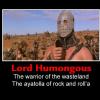2 Stroke Kart engines
#1
 _Baronvonrort_
_Baronvonrort_
Posted 11 February 2010 - 12:56 PM
These engines are very simple and easy to put together a winner without having to pay top engine builders to do what is very simple if you have some patience.
First thing you need is a rule book and a set of kart J engine measuring guages and a ignition puller will also help.
I would not suggest doing your own bottom end rebuild if you have never done them as crankpin has to be pressed out and then pressed in and most reputable engine guys have jigs to hold them in alignment and the know how to ensure they are running true with no runout and charge a reasonable amount for this.
If you need a hone for a new piston you can always take your barrel in and they can do it.
You might hear people whingeing about the ports being different in top dollar engines and while this does happen with cast ports the main one to worry about is exhaust port height,the higher the exhaust port the better it should go and measure this height to ensure it complies with the rules and having it around the minimum of 34.3mm is great.The higher exhaust port allows you to run more intake timing and keep within the 177 deg exhaust timing limit.
The J has a piston that is tapered and oval so when you look at the black line below the ring it gives a hint as to blow by past the ring and one sure way to cheat is to machine the piston in a lathe to make it round more like a racing piston which will make it go better,dont do it its hard to detect and illegal.If you have a few J motors keep the pistons from them and reuse them when rebuilding your smaller bore engines.The J pistons last a long time compared to the 45 minute lifespan of the reed and rotary valve engine that rev to 20,000 rpm.
The piston to bore clearance is around 0.02mm measured at the widest part of the piston and 0.01mm can be used yet the engine must be run in more carefully.
The ring end gap is 0.2mm,take the ring off and place it in the barrel then use a old piston to make sure it is square use a feeler guage to measure this and for a racing engine replace it when gap gets to 0.3mm and for practice engine replace at 0.4mm.
Do not let the gap where ring is held by piston pin get tight it needs some clearance use a points file if it is tight.
Always use new circlips and cut the ears off them i put the gap at 6 o clock.
I put a slight chamfer on the skirt of the piston so oil/fuel can encouraged into the clearance between piston and bore,the rules allow 0.9mm so keep inside this limit.
The arrow on the piston crown should point to the exhaust port.
The bottom end-
Use new crank seals whenever engine is apart and i use a self tapper to remove them so i dont gouge the crankcase.
Any C3-C4 clearance bearing for a J should be ok about $15 each.
Stick the crankcase halves into a oven heated to about 180-200 c and they should fall out.Install new ones while it is hot and makes sure they go all the way in.
I pack the area between the crank seal and bearing with high melting point grease.
I suggest paying someone Like Hurst or Stones even Leigh wright to do crank service take crankcase in as well and let them do end clearnaces.
Assembly-
I try and run the barrel as low as possible (thin gasket) to gain more intake timing and keep in mind the piston has to be within 1mm of top of barrel to be legal so use your aka guages (buy at kart shop).Always measure directly above piston pin as piston can rock slightly which could confuse things.
Then stick your 5mm guage in intake port and wind piston down till it contacts guage,then measure distance down bore to piston crown which is max 12.2mm,if it is shorter than this you can take some material off the front of the skirt till it gets as close as you dare which will increase intake timing.
Then stick a degree wheel onto crank-should do this earlier actually as exhasut has max duration of 177 degrees.
Squish clearance around 1mm is ideal-measure above pin.
CC-s 11 min and run between 11.2-11.4 to compensate for carbon buildup,i would run around 11.2 and use that subaru upper cylinder cleaner to remove carbon buildup which also keeps ring free and if motor is sealed from rules with state/national championship it can be the only thing you can use.
Ignition timing-
Use a timing light and turn motor with a drill to check timing marks are accurate,you will need a dial guage and spark plug adaptor to set it.
Factory is usually set around 1.85mm BTDC.
I would run max of 2.75mm BTDC and min of 2.5mm BTDC depending on how hot motor gets longer races little less, qual and club around max, compression etc comes into it if cooling fins are broken off have to use less.
I would scribe my own timing marks so dial guage does not have to be used for minor adjustments.
More later if anyone is interested those who pay top dollar for a motor on its last oversize piston are mad IMO.
#2

Posted 11 February 2010 - 09:02 PM
#3

Posted 11 February 2010 - 09:44 PM
#4

Posted 12 February 2010 - 10:25 AM
#5

Posted 12 February 2010 - 05:43 PM
It would be criminal not to make it a sticky!
Thanks Baron!
#6
 _pipjones_
_pipjones_
Posted 26 May 2010 - 08:02 PM
Any of you guys that need any pointers. Im more than happy to help.
Cheers..phil
#7
 _Liam_
_Liam_
Posted 26 February 2011 - 10:20 PM
#8
 _slewinson_
_slewinson_
Posted 30 December 2011 - 05:37 PM
Some questions I have are:
- what are the real differences between the old (CDI) and new (TCI) ignitions
- what plug to run, gap etc
- oil - the perennial debate of castor vs synthetic and how much to run
- engine life and how often to change the ring, piston, main and rod/bearings
#9
 _Baronvonrort_
_Baronvonrort_
Posted 07 January 2012 - 02:09 PM
There is a rule in the rulebook about " homologated chassis" for CIK racing which would rule out home made jobs.
Would you prefer to race with something that is proven or get lapped in a home made kart?
slewinson-
I doubt there would be much difference in the ignitions if they are both in perfect working order.
I would use a NGK BP8ES in a J,You could use a B8ES i prefer the projected core plug,if it rained i would still use an 8 heat range on slicks with a J.
When i see people using a 9 heat range plug it indicates to me they are running too much ignition advance.
A J will be happy using a quality synthetic at 25:1 there is no problem with this many swear by this.
I have also run J's on Shell M castor/synthetic at 16:1.
If i was racing a J i would probably use Shell M at 16:1,Everyone has their theories on this so mine is friction causes the greatest power loss at peak rpm(fact) and peak rpm's on a direct drive kart are in the overtaking zone at the end of the straights,less oil means less lubrication,leaner mixtures also mean less lubrication,i think the extra lubrication helps where you need it.
Another benefit is the blue smoke from incorrect carby settings (too rich) is easier to identify.
Engine life with a J
Change the ring when the end gap gets too big for your liking,0.2mm is the minimum endgap measure it in the barrel with feeler guages,obviously keep this as close to minimum if you want motor to perform better.Worn ring allows more blo by which contaminates the next intake charge with a 2 stroke,look at the black carbon line below ring groove on piston with a J they do suffer from blo by because of piston taper and ovality.
Rings are cheap,take your barrel into your kartshop and buy a replacement ring that is the right size when the time comes.
The pistons last forever in a J,dont throw old ones out reuse them in future rebuilds,the worn skirt gives the crown a tighter fit helping reduce blo by.
The crank seals will start to leak which might be a sign they are getting flogged out by worn bearings,keep a eye on the crank seals.
I would run a j bottom end untill the conrod big end bearing gets too much play then rebuild it,you will feel this as excessive up and down movement of rod on crank which indicates bearing is f#cked.
There are only 4 nuts holding a J head on this will be the easiest motor you will ever work on.
#10
 _J.A.W._
_J.A.W._
Posted 24 July 2014 - 10:10 AM
#11
 _Baronvonrort_
_Baronvonrort_
Posted 24 July 2014 - 11:40 AM
I think that motor is too heavy,nowhere to race it.
The 6 speed 125's are fast enough,not much protection in a kart.
Jump to about 2 min if time and bandwidth limited.
http://www.youtube.c...h?v=HCmzTQzc2R8
I have to buy a new camera so will contine with other engines soon.
#12
 _J.A.W._
_J.A.W._
Posted 24 July 2014 - 12:03 PM
300+hp/135lbs a bit too much then - for a kart?
What 'bout this one, its tamer & weighs < 100lbs..
http://www.aaenperfo...cing_engine.asp
#13
 _Baronvonrort_
_Baronvonrort_
Posted 24 July 2014 - 12:17 PM
There is nowhere to race it,if you want a fun kart go for light weight engine.
When i last raced in CIK kart and driver combined was 140kg min weight with 100 cc 30 hp reed valve engine,it would do 3 g's cornering, the 126 6 speed's were 185 kg min weight kart and driver good for 160 kph in a pack of 30 other madmen.
#14
 _J.A.W._
_J.A.W._
Posted 24 July 2014 - 12:24 PM
Probably those big donks 'll do a wee one in a drag race( as you posted) - or maybe on a beach or salt flat?
#15
 _Baronvonrort_
_Baronvonrort_
Posted 25 July 2014 - 10:08 AM
The kiwis run a class i think it is called outlaws, they use 250 cc MX engines on a shifter chassis, that would have more than adequate power and still be lots of fun.
The 250 cc superkarts used the 250 cc GP bike engines, they are faster than V8 supercars at some tracks.
Nothing like the sound of zing zing and the smell of castor/synthetic in the morning.
Not much ground clearnace with a kart,i would only drive them on a proper track,you can damage the chassis, bend brake discs and do all sorts of expensive damage,tracks are a lot smoother bumps affect handling big time.
Check out the Badlands ST4 buggy, they use 600cc and R1 motorbike engines,if you can fabricate/weld you can build one.
#16
 _J.A.W._
_J.A.W._
Posted 25 July 2014 - 11:55 AM
#17
 _J.A.W._
_J.A.W._
#18
 _J.A.W._
_J.A.W._
Posted 28 July 2014 - 08:29 PM
This 2-stroke mill has got a bit of stick, it would give a custom kart a kick-a-long..
http://ntrs.nasa.gov..._1993001160.pdf
Edited by J.A.W., 28 July 2014 - 08:37 PM.
1 user(s) are reading this topic
0 members, 1 guests, 0 anonymous users




 View Garage
View Garage









